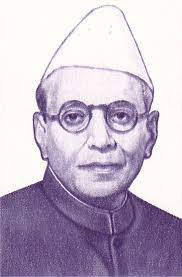Table of Contents
Introduction: 1937 Election
- The 1937 election in India was a landmark event in the country’s struggle for self-governance.
- These elections were held under the provisions of the Government of India Act of 1935, which introduced limited provincial autonomy in British India.
Important Facts: 1937 Election
- Overview of Provincial Elections: Elections were held in 11 provinces – Madras, Central Provinces, Bihar, Orissa, the United Provinces, the Bombay Presidency, Assam, the North-West Frontier Province (NWFP), Bengal, Punjab, and Sind.
- Congress Dominance: The Indian National Congress (INC) emerged as the dominant force in these elections, winning the majority of seats in most provinces.
- Congress Victory in Seven Provinces: Congress emerged as the largest party in 7 out of 11 provinces with a clear majority in five (Madras Presidency, Uttar Pradesh, Central Province, Bihar, and Orissa).
- Coalition Government Formation in Assam and NWFP: Later, in Assam and the NWFP, the Congress formed a coalition govt. with the help of other parties.
- Congress’s Challenges in Bengal and Punjab: The Congress fail to form government only in Bengal and Punjab.
Ministries Formed in Different Provinces: 1937 Election

| Province | Ministry |
|---|---|
| Bombay | Congress ministry under B. G. Kher |
| United Province | Govind Vallabh Pant |
| Madras | C Rajagopalachari |
| Orissa | Hari Krishna Mehtab |
| Central Province | Dr NV Khare |
| Bihar | Sri Krishna Sinha |
| North-West Frontier Province | Dr Khan Saheb |
| Bengal | The Krishak Praja Party of A. K. Fazlul Huq formed a coalition government with the support of the Muslim League |
| Sind | Ghulam Hussain Hidayatullah and Allah Bakhsh |
| Assam | |
| Punjab | Sikandar Hayat Khan of Unionist party |
Congress Ministers’ Reform Agenda
- These Congress ministers focused on the expansion of primary, vocational, and higher education.
- They also aimed at improving public health.
- By amending the tenancy laws and reducing the rights of moneylenders, they benefited the farming community of the country. In the United Province and Bihar, tenancy Bills were passed.
- They aimed to ensure that “individual independence” is not undermined.
- During their rule, the police and detectives were no longer able to mislead the public as before.
- Newspapers were given unrestricted freedom.
- Control over labor organizations or trade unions was loosened, thereby allowing for wage increases for the working class.
Resignation Of Congress Ministry
- World War II officially began on September 1, 1939, when Germany invaded Poland.
- On September 3, 1939, Viceroy, Lord Linlithgow, announced that India was entering into war with Germany alongside Britain.
- The government took part in this war without any consultation with the elected representatives of the Indian National Congress or the Central Legislative Council.
- The Congress ministries resigned (on 22 October 1939) in protest against the British government’s decision to involve India in World War II without consulting Indian leaders.
- Reaction of the Muslim League: On December 2, 1939, Jinnah issued an appeal urging Indian Muslims to celebrate December 22, 1939, as a “Day of Deliverance” from Congress.
- Pakistan Resolution:
- The Muslim League used the vacuum created by the Congress ministries’ resignation to intensify its demand for a separate Muslim-majority nation, which eventually culminated in the Lahore Resolution of 1940.
- This resolution, was later known as the Pakistan Resolution.
